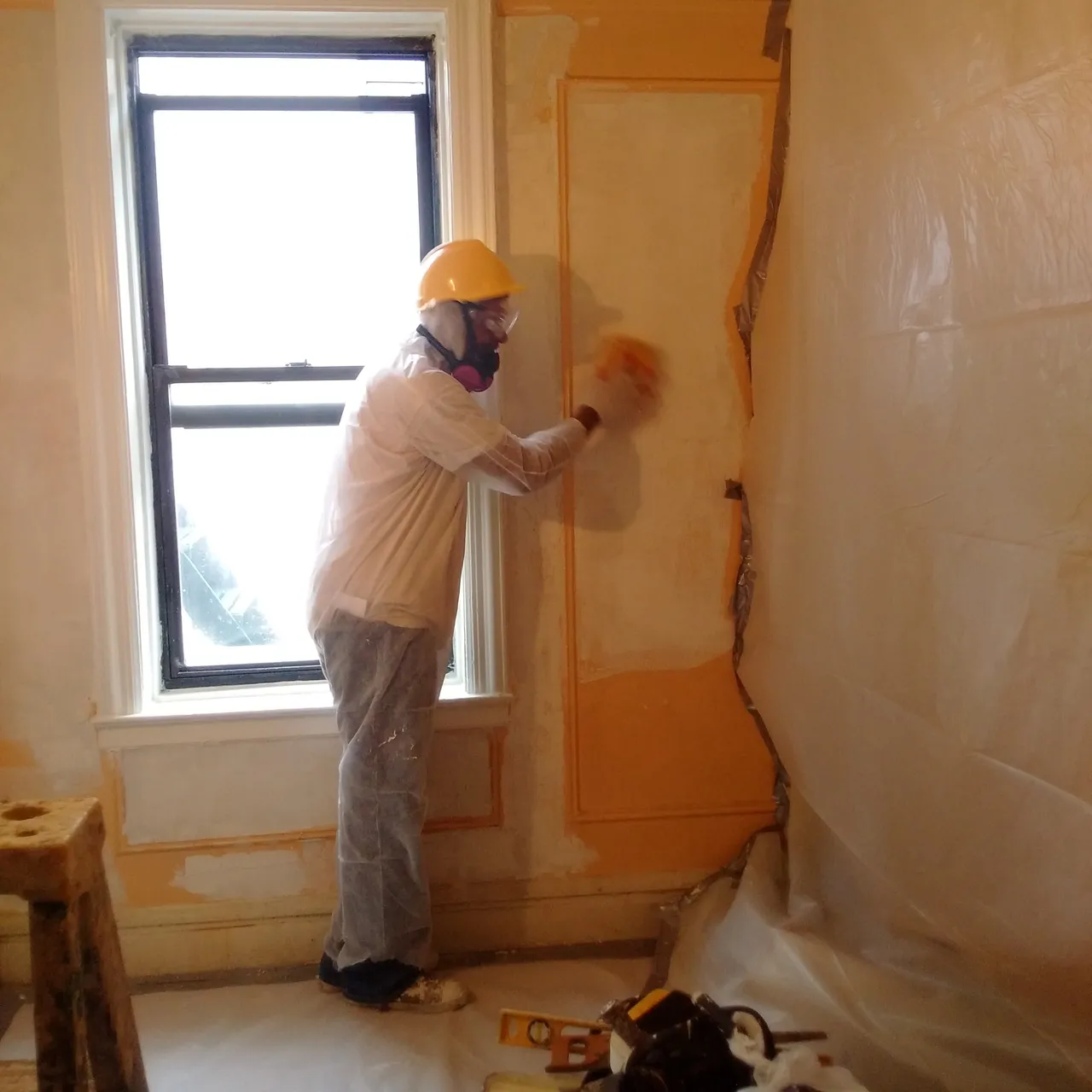Relied On Lead Paint Removal Company-- NYC's Premier Lead Reduction Service
Relied On Lead Paint Removal Company-- NYC's Premier Lead Reduction Service
Blog Article
Essential Tools and Methods for Reliable Lead Offense Cleanup
Resolving lead infractions efficiently demands an extensive method that mixes the right devices with critical methodologies. The very first step includes furnishing employees with Personal Protective Devices (PPE) to secure their health and wellness. Simultaneously, making use of specialized cleanup tools, such as HEPA vacuums and lead-specific cleaner, is essential for extensive contaminant elimination. Effective containment techniques, including plastic bed linen and negative atmospheric pressure systems, are vital to prevent the spread of hazardous materials. Safe disposal methods and strict adherence to governing standards make sure liable handling of harmful waste. Yet what are the nuanced approaches that absolutely make a difference?
Individual Protective Devices
Personal protective equipment (PPE) is an important element in the effective management of lead contamination cleaning. The necessary PPE for lead clean-up includes respirators, protective apparel, handwear covers, and eye security.
Respirators, specifically those geared up with HEPA filters, are vital for filtering system air-borne lead fragments, avoiding breathing. Safety garments, including coveralls and disposable fits, protects against lead dust from sticking to employees' garments, lowering the threat of secondary contamination.
In addition, rigorous training on the proper use and maintenance of PPE is crucial. Employees have to be enlightened on wearing and doffing treatments to prevent contamination. Normal evaluations and substitutes of PPE elements are needed to keep their safety abilities, making certain a secure and compliant clean-up operation.
Specialized Clean-up Tools

Another crucial device is the wet/dry vacuum cleaner, which can effectively tidy up both dust and liquid impurities. These vacuum cleaners usually include HEPA filters to offer an additional layer of security. Damp wipes or tack fabrics are likewise crucial for surface cleaning; they are especially developed to capture and hold lead particles, minimizing the threat of spreading out contamination.
For even more persistent deposits, specialized lead-removal cleaning representatives are needed. These representatives are formulated to break down lead particles, making them easier to remove. Scrub brushes with strong bristles can assist in this procedure, especially on harsh surfaces where lead dirt often tends to adhere a lot more highly.
In addition, encapsulants are made use of to secure lead-contaminated surface areas, stopping the launch of lead dirt. These specialized paints and layers are designed to abide by numerous substrates, offering a long-term option for lead control.
Reliable Containment Techniques
Reliable containment approaches are important in reducing the spread of lead contamination throughout cleanup activities. Implementing durable control methods makes sure that lead particles do not migrate to unaffected areas, thus safeguarding both workers and the environment. One key approach is using plastic sheeting to seal polluted areas. Durable polyethylene barriers can be installed from flooring click here now to ceiling to produce a controlled workspace, dramatically decreasing the risk of airborne lead dirt dispersal.

To boost containment, encapsulants can be put on surfaces that are not being eliminated or interrupted. These specialized finishes bind lead dust, lowering its schedule for resuspension. Furthermore, all employees need to wear proper Personal Protective Equipment (PPE), including respirators and non reusable fits, to stop contamination spread.
Safe Disposal Practices
Making sure secure disposal practices is an important part in the management of lead contamination clean-up. Correct disposal mitigates the danger of lead returning to the setting and endangering public wellness (DOH & HPD Lead Violation Removal NYC).
Transferring lead waste needs adherence to stringent standards. Using qualified contaminated materials service providers makes certain that the materials are handled properly. Paperwork, consisting of manifests detailing the type and quantity of waste, ought to accompany shipments to track the waste from the site of origin to its final disposal destination.
Designated dangerous waste disposal facilities are geared up to deal with lead-contaminated materials safely. These facilities frequently employ advanced methods such as stabilization, solidification, or chemical therapy to counteract the lead prior to disposal. Landfilling in specialized, lined locations that stop leachate from polluting groundwater is an usual method for final disposal.
Regular training for personnel associated with lead garbage disposal is vital to preserve security standards and prevent accidental direct exposure. By adhering to these practices, companies can dramatically minimize the ecological and wellness effects associated with lead contamination.
Regulatory Conformity Tips

Abiding by regulatory conformity is critical in the successful implementation of lead contamination cleanup. Recognizing and complying with federal, state, and neighborhood policies makes certain not just the safety and security and health and wellness of individuals however also the lawful and financial health of the cleanup company. The Epa (EPA) establishes rigorous standards, such as the Lead Improvement, Repair Work, and Paint (RRP) Guideline, which mandates appropriate qualification and training for service providers managing lead-based tasks.
Compliance starts with an extensive analysis of applicable legislations and guidelines. Organizations has to stay updated on any type of legislative adjustments, which can be facilitated through regular training sessions and subscribing to market updates. Paperwork is an additional vital conformity facet; maintaining detailed records of all activities, including evaluation reports, employee training logs, and disposal materializes, is necessary.
In addition, involving with licensed lead assessors or take the chance of assessors ensures that lead hazards are appropriately determined and alleviated. Companies need to implement making use of Personal Protective Equipment (PPE) and make sure that safety and security methods are purely complied with. Finally, transparent communication with stakeholders, consisting of staff members, clients, and regulatory bodies, will certainly cultivate a society of compliance and accountability, ultimately adding to a more secure and a lot more reliable lead clean-up process.
Final Thought
Efficient lead infraction investigate this site cleaning necessitates the assimilation of specialized tools and calculated techniques to guarantee safety and security and efficacy. Personal protective devices (PPE) safeguards employees from exposure, while risk-free disposal techniques and rigorous adherence to regulatory compliance are necessary for responsibly handling hazardous waste.
Report this page